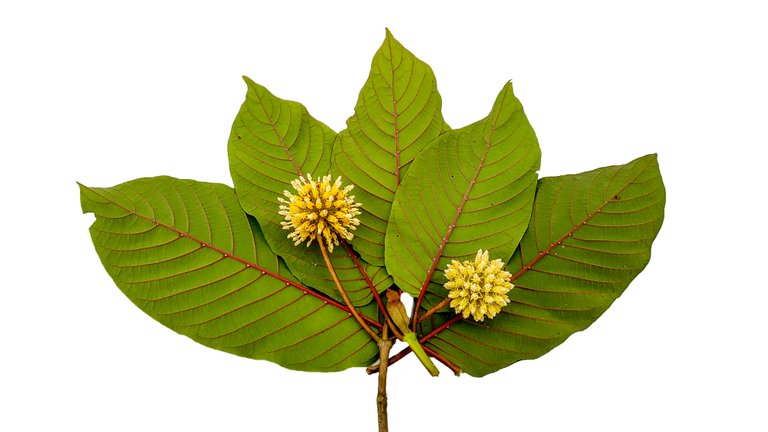Indigenous to Cambodia, Thailand, Indonesia, Malaysia, Myanmar, and Papua New Guinea, is a tree that is known for its healing properties by natives. It is believed to have lots of medicinal use, but it is also cultivated for its recreational use. That leave is Kratom (Mitragyna speciosa).
It grows in the wild, in swampy forest and it is also cultivated by people who want to use it for its medicinal purposes. A member of the Rubiaceae family which is a family of 14,000 other species including that delicious coffee you like. Kratom can grow up to 50 ft tall with its flowers arranged in spherical clusters and its leaf looks like every other type of leaf but there is more to the leaf than it meets the eye.
Just like coffee, people use low doses of kratom to boost alertness and energy and if it is going to do this, then it is going to tamper with heart rate of course since it is a stimulant. The leaf is chewed by natives to help them overcome fatigue and also alleviate pain but while people feel this way when taking small amount, they do not feel the same when they take it in high dose. When users take high dose, it gives them this calm feeling and can also be a sedative but still reduces pain and this time, anxiety.
People who consume this drug can experience dry mouth, nausea, vomiting, dizziness, high blood pressure, muscle pain, agitation, drowsiness, and confusion. Serious cases include problem breathing, liver damage, seizures, tremors, delusions, depression, and hallucinations. People who use it for long term can experience weight loss, aggression, muscle spasms, pains in the muscles and the joint.
Just as coca leaves are traditionally chewed, people chew kratom leaves as well but it can also be turned into extract, tea, grounded, and turned into tablets/capsules. People also smoke it and when they do, it begins work in minutes and can last up to a few hours. Just like the other members of the Rubiaceae family, Kratom contains alkaloids which are present to prevent herbivores from eating the plants but just like it has its effect on herbivores, it also has its effect on humans and we have about 20,000 known alkaloids like caffeine present in coffee, nicotine, morphine,and cocaine.
In kratom, there are a lot of alkaloids present reaching over 30 in number but the most studied are Mitragynine and 7-OH-Mitragynine which produce opioid-like effect only except that they do not affect the breathing pathway in the brain and it is not as addictive as other opioid substances.
For now, this substance is still unregulated being legal in some countries, illegal in some, and just staying in the middle in others. Kratom is also sold as a health food product and excessive use can lead to overdose. So if you haven't heard about kratom or heard about its negative effects, it is because it has not been classified as a controlled drug yet in a lot of countries.
https://www.health.harvard.edu/blog/kratom-fear-worthy-foliage-or-beneficialhttps://nida.nih.gov/research-topics/kratom
https://www.dea.gov/sites/default/files/2020-06/Kratom-2020_0.pdf
https://www.fda.gov/news-events/public-health-focus/fda-and-kratom
https://www.ncbi.nlm.nih.gov/books/NBK585120/


Thanks for your contribution to the STEMsocial community. Feel free to join us on discord to get to know the rest of us!
Please consider delegating to the @stemsocial account (85% of the curation rewards are returned).
Thanks for including @stemsocial as a beneficiary, which gives you stronger support.